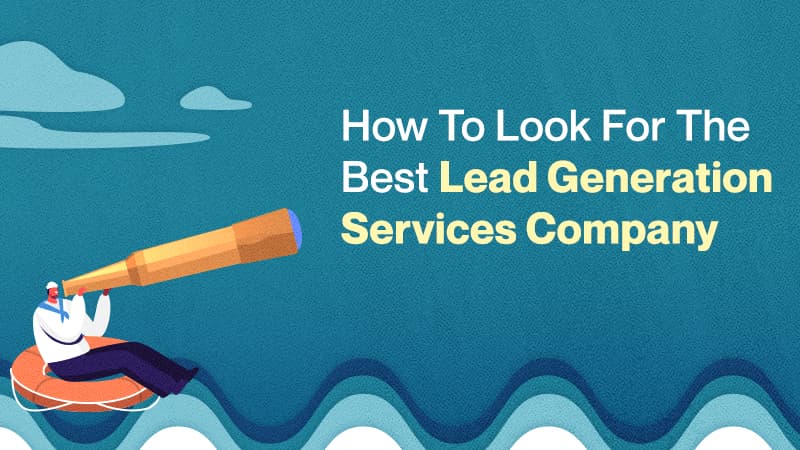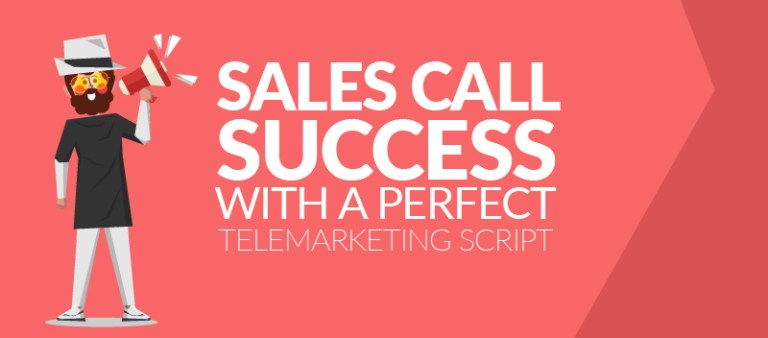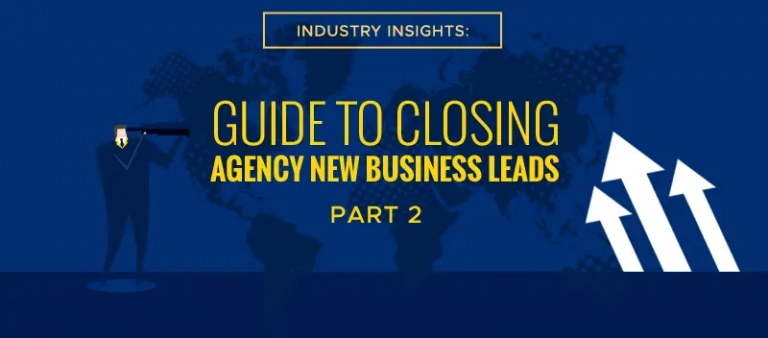Lead generation is a universal need for every industry. At the same time, lead generation looks different for every industry as they all draw their leads from various sources.
A lot of times it can be a trial and error until you find which source is your gold mine while others may not be branching out as much as they should. So, in this blog post, we are going to look at the top lead generation sources for each industry that you can utilize in your lead generation journey.
Tech and Software
Webinars
It takes a lot more effort and commitment to participate in a webinar than read a blog, so the resultant leads you have to work with should be hotter and better qualified.
Interactive – As mentioned, the key benefit of a webinar is that it is interactive by nature. Written copy just can’t match that when it comes to engaging with an audience.
Global reach – Thanks to the internet, you can now reach a target audience based anywhere in the world.
it’s critical to develop webinar content before you even attempt to attract attendees. When you know exactly what topic you plan to explore and which pain points you’re going to solve, it’s easier to appeal to your ideal attendee and subsequently convert them to a paying customer.
The next step is to consider which format will resonate most with your ideal buyer. Here are three examples of effective webinar formats to choose from:
- Educational Webinars: This is the most popular type of webinar as it provides action steps to solve your prospect’s problem. In fact, research shows webinar titles containing a list or the words “how to” drive higher attendance rates, showing the power of practical information to gain new leads.
- Case studies: The reason why this is an effective webinar format is that sales-ready leads want concrete details on product ROI and benefits. Case studies provide social proof that your product can deliver.
- Live Workshop Webinar: In this type of webinar, you would ask your attendees to submit a real-life problem, which you can do either before or during the session, and then give them advice on how to solve it and/or demonstrate the solution during your webinar.
Related: Webinar Marketing Services for Software Companies
Landing Pages
Landing pages are an essential piece of any well-crafted, effective inbound marketing strategy. Think of these pages as landing pads for the numerous prospects that visit your website. Whether you’re looking to generate leads, sell products, or collect data, landing pages are where the visitor conversion occurs. To get the most out of your landing pages and optimize for conversion, use these tips.
A landing page is a web page that allows you to capture a visitor’s information through a lead form. It’s where visitors land when they click a call-to-action on your website, blog, offer, or pay-per-click ad on social platforms. On your landing page, visitors will find a form to fill out for an offer. When they submit your information, they are captured as a new lead in your database.
By sending your visitors to a targeted landing page, you are directing them to the exact place they need to be for them to fill out your form and complete the conversion. This simplifies the process and keeps prospects from meandering around your website looking for the content or offer you promised them.
Your goal as a marketer is to deliver the right information, to the right person, at the right time to convert your visitors into leads and sales.
Outbound Prospecting
Outbound prospecting is not as subtle or delicate as inbound prospecting is. Outbound prospecting consists of building a list of potential prospects, that is, people and companies that could benefit from your products and/pr services. It aims to reach out to these prospects through cold outreach such as cold emails and cold calling.
As you can see, this is a pretty straightforward approach and its purpose is establishing that first contact and qualifying leads that are after that, forwarded to sales execs who work on closing deals. So, a growing business doesn’t have the luxury of focusing on inbound prospecting, which is why outbound prospecting should be your No. 1 strategy at this point.
Related: How to Generate Leads Faster with this Proven Outbound Workflow
Healthcare and Medical
Outbound Prospecting
Medical lead generation is dependent on proper search engine optimization (SEO). Your website should be optimized so search engines can contextualize, index, and display your site.
On your website, you have to be sure to optimize the following:
- Title tags
- Meta descriptions
- On-page content
There are other elements to optimize, but the three listed above are good starting points when it comes to healthcare lead generation.
Remember that your most effective keywords could change over time, so it’s important to conduct periodic keyword research. It’s a low-cost strategy for hospitals to attract the right people.
Interactive Elements in your Content
Of course, your content is meaningful and shares helpful information with your website visitors. If you want to stay ahead of your competition and stand out against the crowd, add multimedia or interactive elements to your content.
Hospitals, for example, tend to publish the same kind of content about health news and tips. If you only do the same, it will be harder to get noticed and hook new leads. Interactive content can take your content marketing game to new heights. One good example is an interactive white paper. It will ask the readers questions and give them appropriate information based on their responses.
It can include videos, assessments, and calculators to help the readers enjoy an experience that feels personal to their needs and nurture them into healthcare leads.
User-friendly Website
Your website speaks volumes about your hospital, practice, or business, especially in terms of professionalism.
Remember that every marketing strategy you attempt online will eventually lead people back to your website. It’s where they’ll learn how to contact you for more information and if they generally trust you.
Ask yourself the following questions to decide if your website is in good shape to generate healthcare leads:
- Is it visible in search engines?
- Is it easy to navigate around?
- Is your contact information on every page?
- Does it load quickly?
- Does it offer users valuable information?
If you answered no to any of the questions above, you may want to revisit your website. Make sure it’s well-designed and maintained so that physicians, consumers, and business buyers in the healthcare sector feel confident about your organization and its offerings.
Consulting
Call-To-Action
Offering impactful content is only going to be effective at generating leads if consumers can find it. The number of people who stick around on your site dramatically decreases the further down the page they get, which is why your important information and calls to action (CTA) should be above the fold. This ensures an increase in the number of people who see it and, in turn, increases those who click to take action.
Once a call to action is seen it is often the wording itself that has the power to convert a website visitor into a lead. Effective CTA wording states exactly what the visitor will get when they click. This means you should avoid ambiguity with general phrases such as “Click here” and “Learn more.” Beginning each CTA with persuasive, action-oriented verbs has been proven to compel more users to click.
Social Media
Using your social media channels as a way to market and engage with your audience, announce events, and highlight your services gives you yet another lead generation tool.
Most small businesses that are active on social media seek visibility for their business and trust that increased visibility will result in more of the right types of leads ultimately coming to their website or giving the business a call. Effective social media lead generation doesn’t leave things to chance in this way. Success is built on consistently growing the audience of prospects that your business reaches and consistently seeking to convert that audience into people who’ve booked in for a call or requested a demo or registered for your next sales event.
The behavior of potential customers and the selling opportunities on social media sites are subject to change, making it really important to keep altering your strategies so they don’t go stale. We take advantage of the ever-changing nature of social media behavior and evolving digital trends to gain more leads for your business.
Retargeting
Investigate retargeting as a way to follow interested parties around the web in the hopes that they will succumb to your persistence. While some may think retargeting smacks of stalking, it has been proved that most people need to see your offers seven times before buying, and retargeting works very well—and it’s fairly inexpensive to boot!
Financial Services
Online and Social Media ads
Mastering advertising is a perennial exercise in experimenting and optimizing to increase ROI. The digital arena, however, makes lead generation for financial advisors via advertising a far more efficient process. Most programs qualify as ‘pay-per-click.’ This means you only pay when you get a click and you get analytic insights to help you get more bang for your buck as you iterate your campaigns
Facebook, LinkedIn, Twitter, and YouTube are all viable channels. Identify your target market, research the media preferences of your best prospects, and give it a go. Your budget can start as low as $5 per day and you can increase your investment as your confidence grows and you become more accustomed to how much financial advisor leads cost on average.
Blog posts
You don’t just want website visitors; you want subscribers. That is, you want prospects to visit often. Make this happen by making your website a source of content prospects and customers find valuable by publishing a regular blog.
Your blog must provide visitors with the information they seek and get pages of your website to rank on search. And you must also share the content of your blog via social media and email.
Networking events
Treat networking events as an opportunity to build relationships, not as a race to collect as many business cards as possible. Networking has a bad reputation because people treat each other as transactions. If you’re in my target market, I’ll take your card and move on to the next transaction.
Instead, take the time to get to know someone. He or she will be much more likely to return your follow-up call or email after the event. Having a conversation will also give you something to talk about when you do follow up. Sales are all about building relationships – networking should be, too.
Related: Sales Outsourcing as a Revenue Channel for Financial Firms




